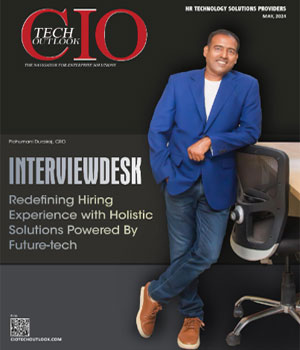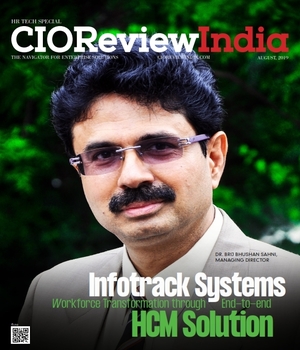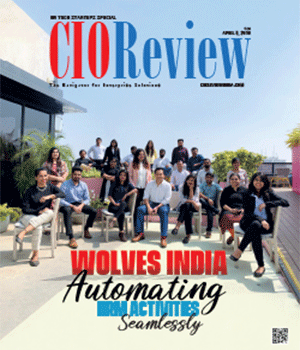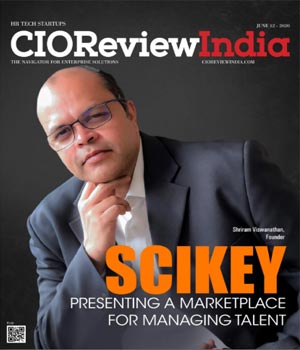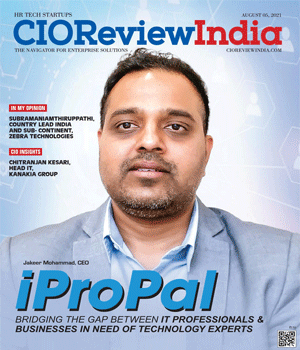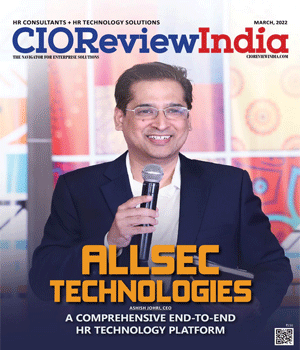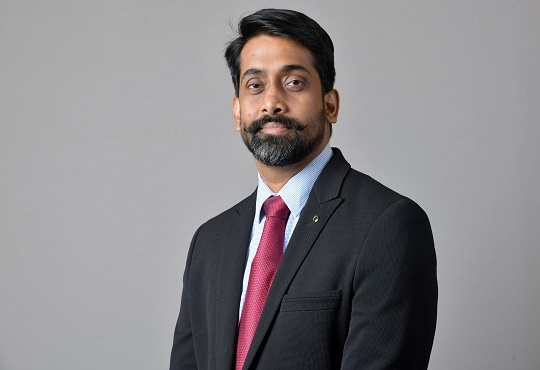Indian C-suite leaders hopeful of covering up lag in talent shortage through skillful deployment of contingent workers
CIOReview Team | Tuesday, 05 December 2017, 12:45 IST
 KellyOCG, a leading talent management solutions provider, today unveiled its Workforce Agility Barometer Report: Navigate Asia Pacific’s Future Talent Frontier. Workforce agility is an organisation’s ability to swiftly scale its workforce in highly uncertain economic times and remain resilient despite emerging disruptions. To determine businesses’ current state of workforce agility in the region, KellyOCG asked C-suite leaders about their talent acquisition practices, how they see their talent needs transforming, and their plans for their companies’ future.
KellyOCG, a leading talent management solutions provider, today unveiled its Workforce Agility Barometer Report: Navigate Asia Pacific’s Future Talent Frontier. Workforce agility is an organisation’s ability to swiftly scale its workforce in highly uncertain economic times and remain resilient despite emerging disruptions. To determine businesses’ current state of workforce agility in the region, KellyOCG asked C-suite leaders about their talent acquisition practices, how they see their talent needs transforming, and their plans for their companies’ future.
The study was conducted amongst 210 C-suite level executives across India, Singapore, Australia, and Malaysia from industries such as banking and financial services, life sciences, healthcare and medical services, and manufacturing. Majority of respondents in the region (61 percent) said they expect a negative impact on their business because of talent shortages in the next three years. However, in India, there seems to be some bit of positive sentiment, with 54 percent of C-suite members feeling less strain of a negative impact due to talent shortage.
Quite clearly, 57 percent of Indian C-suite respondents acknowledged that majority of business growth currently is being driven by workforce availability and adaptability followed closely by digitisation, technology and innovation (54 percent of respondents agreed). This indicates that not only technological prowess drives growth, but the right kind of workforce to enable this growth is equally important.
Interestingly in India, the role of HR is immense with more than half of respondents admitting to having engaged their HR team right at the beginning of the business strategy development stage itself. An additional 27 percent of respondents engaged with their HR teams at the operational planning stage. This is a good indicator of the value that HR teams bring onto the table when it comes to human resource planning right at the beginning of any business project.
The survey revealed that C-suite leaders recognised HR’s potential to enable business strategy, with more than half of respondents perceiving their HR function to be either competent or fully competent at using strategic workforce insights, talent acquisition and recruitment, talent development and retention and determining compensation & benefits.
“C-suite leaders understand that more needs to be done to ensure workforce planning is addressed when developing business strategies. In today’s challenging business environment, some leaders are already working towards ensuring that they have a nimble workforce. To adapt during times of uncertainty, they are becoming increasingly dependent on contingent workers,” said Francis Padamadan, Country Director, KellyOCG.
Contingent workers – otherwise widely known as free agents or gig workers – form the external workforce of organisations and consist of freelancers, independent contractors, micropreneurs, small business owners and temporary or contract workers. As work is increasingly automated, businesses face new challenges in optimising their contingent workforce and linking HR strategy to the broader business strategy.
“Before they start calculating headcount and negotiating the cost of talent, business and HR leaders need to step back and re-examine the work itself. By figuring out which tasks can be performed or supported by automation, and then identifying areas where all types of talent can be used to the best effect, companies can design a more agile workforce that adapts to the changing landscape and includes workers with the skill sets that will carry them into the future,” added Francis.
Close to 52 percent of C-suite leaders in India cited the ‘lack of available talent’ as the most difficult issue faced when it came to attracting talent. However, Indian firms have a plan in place to overcome this talent shortage by building contingency plans for a short term (between 1 to 3 years) when compared to the rest of the markets which makes the system resilient to face any form of shortage in the short to mid-term period. At the same time, 68 percent of top executives recognised that the contingent workforce gave them ‘access to specialist skills and expertise that lie outside of the organisation’.
Besides traditional permanent work arrangements, flexible work arrangements are commonplace. Project-based assignments are gaining popularity in the developing countries and almost 71 percent of them in India expect to maintain or increase their percentage of contingent workers in the next two years.
Over the past few years, KellyOCG has seen businesses in the region expanding their use of the contingent workforce and leveraging this talent pool more strategically. Many companies are now looking beyond filling immediate talent shortages and have started to recognise the contingent workforce as an integral part of a more holistic workforce structure.
With the emergence of new technologies, talent strategies today have evolved, the study found. Workforce analytics tools enable businesses to determine the optimal talent mix that they require for their immediate and future business goals.
Businesses need to look beyond traditional HR training and development and tap into workforce data and insights to determine a holistic workforce management approach. By doing so, they will be able to identify the right talents at the right time and for the right value. This will ensure that their workforce is future-proof and ready to tackle the challenges ahead, the report concluded.
CIO Viewpoint
Empowering Women: Shaping the Future of Industry
By CIOTechOutlook Team
Scaling AI: Finding the right Biztech...
By Sujatha Gopal, CTO - Communications, Media & Information Services (CMI), Tata Consultancy services
Gen AI: Transforming Cloud Solutions for...
By Matt Yanchyshyn, VP - AWS Marketplace & Partner Services, AWS
CXO Insights
Digitalization in HR Operations
By Jaishankar Balan, Head, Human Resources at Bharti AXA Life Insurance
People Analytics: Critical to driving Business...
By Manan Jain, Lead- HR People Partner & Experience, India, YASH Technologies
Components Of Strategic Management Model


